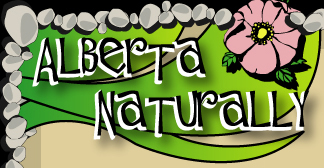 Heritage Community Foundation Presents
Heritage Community Foundation Presents
Alberta Online Encyclopedia and Edukits
 Heritage Community Foundation Presents
Heritage Community Foundation Presents
Alberta Online Encyclopedia and Edukits
 |
 |
||||||||
 |
The Rocky Mountain Region The Rocky Mountain Region is probably Alberta’s best-known natural area. People come from all over the world to hike and ski in this beautiful environment. This range of mountains accounts for about half of Alberta’s western border with British Columbia. Rugged peaks, beautiful valleys, meadows, lush forests, glacial lakes and rivers characterize the region. The Rocky Mountains have three different climatic zones. This is due to the differences in elevation, and the moist winds of Pacific air that come over the mountains. The cooler, moist climate zone is found on the lower slopes and in the high mountain valleys. The milder, dry climate is found in areas like the Crowsnest Pass, or the lower valleys of the Athabasca, North Saskatchewan and Bow rivers. The harshest climate in the province is found at the highest elevations. These areas are exposed to high winds and very cold temperatures. The vegetation that grows in each climatic zone is different. In the cooler, moist areas trees like the Engelmann spruce and the alpine fir make up the forest. In the milder, dry climate zone Douglas fir and limber pine trees dominate the forest. At the high elevation, trees grow twisted, bent and close to the ground due to the high winds. Not much grows above the tree line except for lichen on rocks and some grasses. Aside from the tourism industry, the Rocky Mountains also offer a wealth of trees for forestry and minerals for mining. Oli and gas exploration also occur in this area. Areas like Waterton, Banff and Jasper are protected as National Parks. This limits the resource development that can take place inside their boundaries. There are also protected areas that the government of Alberta has established to further limit resource development. Even with protection, some mountain areas have been heavily damaged by resource development. Some of the major problems the region experiences are forest fires and wildlife/people encounters. Animals are sometimes killed on the highways due to traffic, but park officials are trying to find ways to lure animals away from the roads. Sometimes people become the victims of animal attacks. People tend to forget that they are not in a zoo, and try to feed the animals or get close to them. This results in problems for both the animals and the people. The Rocky Mountains remain one of the least developed regions in the province of Alberta. The three sub-regions of the Rocky Mountains are known as the Montane, Subalpine and Alpine. To learn more about the Rocky Mountains and its sub-regions follow the link below to the page and choose a sub-region listed above from the menu at the bottom of the page. http://www.abheritage.ca/abnature/mountains/mountain.htm All content was adapted from: Information provided by and printed with the permission of Alberta Community Development, Provincial Parks and Protected Areas. Alberta Natural Regions Poster Series Manual (Alberta Environmental Protection) |
 |
|||||||
 |
 |
||||||||
 |
 |
 |
|||||||